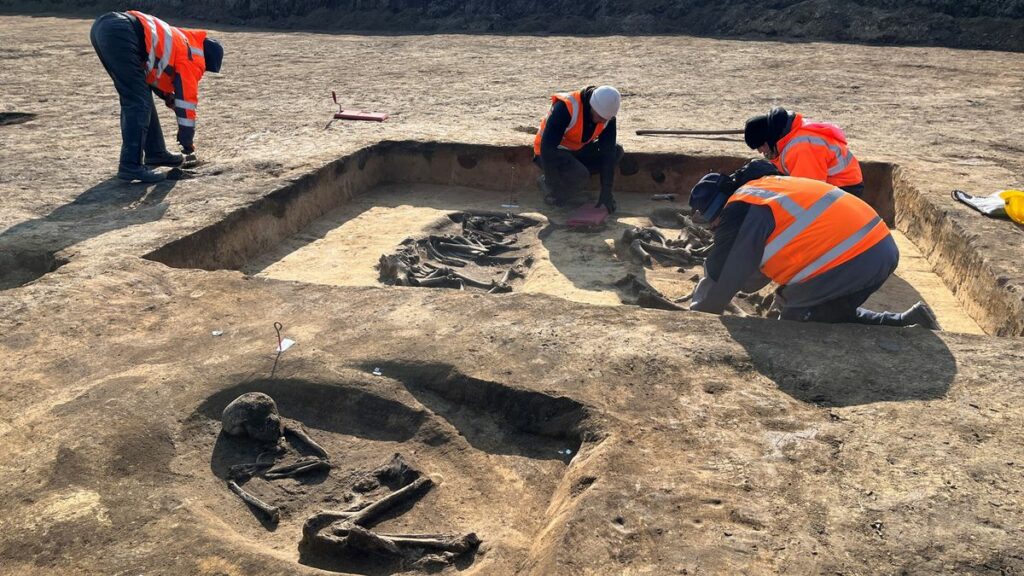While planning to construct a billion-dollar chip factory in Magdeburg, Germany, Intel encountered an unexpected delay: archaeologists unearthed two prehistoric burial mounds, approximately 6,000 years old, at the site. Before commencing work on the 300-hectare industrial park, archaeologists examined the area and discovered two large wooden burial chambers dating back around 6,000 years, containing multiple human and intriguing animal remains.
6,000-year-old graves discovered at Intel’s chip factory construction site in Germany
These burial chambers, described as large wooden structures, were around 20 and 30 meters in length, situated near the proposed site for Intel’s facility in Magdeburg, 200 meters apart from each other.

Thought to be constructed by the Baalberg people, dominant in Central Germany and Bohemia between 4100 and 3600 BC, these sites hint at ritual processions that might have taken place in a corridor between these burial mounds during the Globular Amphora Culture era (3300 – 2800 BC).
Moreover, archaeologists believe they found a Neolithic “chariot burial” type, where a human skeleton is laid out in front of what appears to be an image of a chariot and driver, pulled by animals. It’s indicated that the human remains belong to a man aged 35-40 and the animals were around 2-3 years old at their time of death.
This discovery could raise concerns for Intel’s management, considering archaeological findings can lead to significant delays in related construction projects. However, the German Archaeological Office’s press release doesn’t mention potential delays.

The research and excavations started last year and are expected to be completed this April. It remains uncertain whether the archaeological discoveries will cause any delays to Intel’s factory construction in Magdeburg.
This situation highlights the interaction between technology and history and the impact of industrial development on cultural heritage. What are your thoughts on this topic? Share your opinions in the comments section below.














